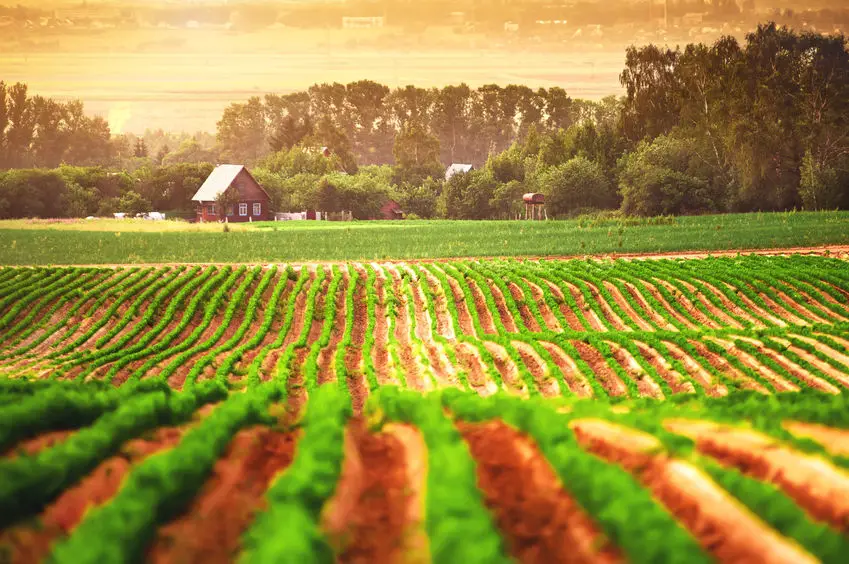

| Online: | |
| Visits: | |
| Stories: |

| Story Views | |
| Now: | |
| Last Hour: | |
| Last 24 Hours: | |
| Total: | |
Food Sourced From Biodynamic Farms “Tastes Better” According To Farmers – TruthTheory

Biodynamic farming is becoming increasingly more common within the United States, but what does biodynamic really mean, and is it more effective than organic farming?
John Chester, a filmmaker from California, quit his job to become a farmer with his wife, Molly. They now run a 213-acre biodynamic and organic farm in Moorpark, California, and have since been recognised by the National Wildlife Federation and the North American Butterfly Association for supporting such a huge array of wildlife, which is a recognition that is seldom given to farms. Chester said, “I’m trying to feed my neighbors – and if everyone did that, we would be able to replicate this.”
According to Elizabeth Candelario, co-director of Demeter USA, the nonprofit certifier of biodynamic farms and consumer products in the US, the total amount of acreage for biodynamic farming increased by 16% last year in the US, totalling 21,791 acres. Earlier this year, Demeter began collecting topsoil samples from biodynamic farms to test whether soil quality is improving each year as “This will provide a tool for farmers who continue to focus on building healthy soil, and give voice to power about biodynamic agriculture’s role in mitigating the impacts of climate change”, according to Candelario.
Reports state that if a farm is certified as biodynamic, it means that it has met all of the necessary requirements of organic, but with some additional measurements. These include things such as the farm system itself producing its own fertility, such as compost and nutrients, as much as possible through the integration of livestock and the rotation of crops. Biodynamic requirements also state that 50% of livestock feed must be grown on the farm, and 10% of the entire farm must be set aside for biodiversity in order to achieve a balanced predator/prey relationship. Candelario explained the difference between organic and biodynamic farms by stating, “Biodynamic agriculture treats the farm like a living organism, self-contained and self-sustainable. Biodynamic is what organic farming has emerged from. It’s the way farmers have farmed for millennia, before the advent of industrial agriculture.”
Candelario has said that the natural food industry is now beginning to recognise the importance of adopting biodynamic methods to increase sustainability, claiming “you can’t have a sustainable business model if the farming that stands behind your products is unsustainable”. Many US food companies including Republic of Tea, Back to The Roots, Amy’s Kitchen, Lakewood Juices and Lundberg Family Farms, are now sourcing from biodynamic farms, citing commitments to sustainable practices.
Errol Schweizer, the lead merchandiser and negotiator at Whole Foods for nearly a decade, has stated that consumers love biodynamic food produce because it tastes better, even if they don’t currently recognise what biodynamic means. He said, “Customers want it, even if they don’t recognize the biodynamic certification on a box. What they want is food that tastes good and is grown ethically.” The improvement on flavour could be due to the prohibition of chemical pesticides, which leads plants to produce their own antioxidants to fight any damage that occurs. These antioxidants positively impact taste and flavour, as well as being beneficial to humans.
However, there have been critics of the biodynamic method who are skeptical about whether the method can feed the masses. Mikhail Arora, who runs Oakland-based Back to the Roots which sells biodynamic cereal said, “We want to scale but we have to be mindful of how much supply we have. We’re working directly with the farmer, not a commodities market. We pre-purchase the wheat before he even harvests it. So it’s a different model.” Chester from Apricot Lane Farms said, “What people don’t understand is that biodynamic farming is about responding to the farm, living, breathing it. If you have a problem, you have to think of three solutions that come from the farm itself. Those so-called problems are part of the art of farming, which has been lost in this rat race to produce cheap food.” He concludes that “Consumers need to continue to demand transparency in the food they purchase and support the brands, and the farms, that are bringing products to market in the most ecological way possible. The beautiful short term reward in all of this is that our food is only as good as the farming that stands behind it.”
IMAGE CREDIT:fotomandm / 123RF Stock Photo
THIS ARTICLE IS OFFERED UNDER CREATIVE COMMONS LICENSE. IT’S OKAY TO REPUBLISH IT ANYWHERE AS LONG AS ATTRIBUTION BIO IS INCLUDED AND ALL LINKS REMAIN INTACT.
http://truththeory.com/2017/03/09/food-sourced-biodynamic-farms-tastes-better-according-farmers/
Category:
Source: http://soundofheart.org/galacticfreepress/content/food-sourced-biodynamic-farms-%E2%80%9Ctastes-better%E2%80%9D-according-farmers-truththeory


